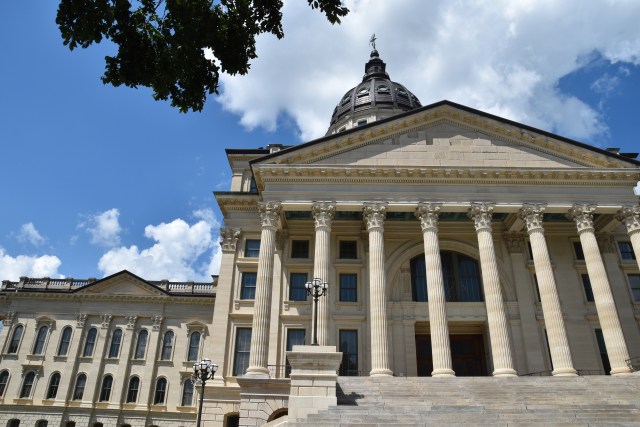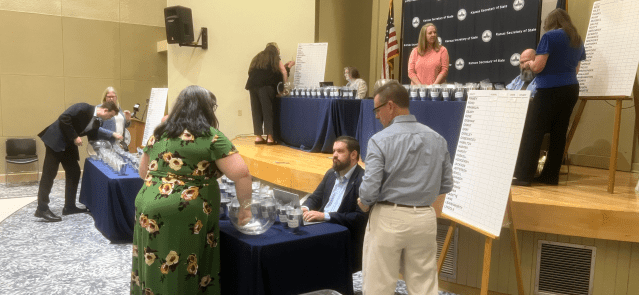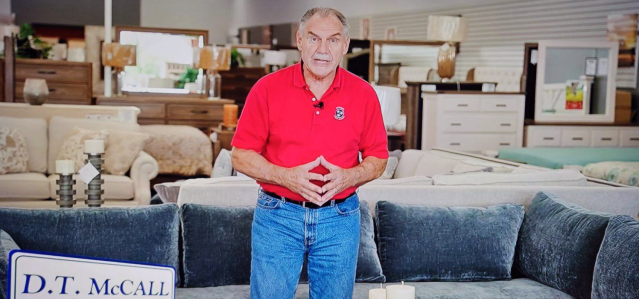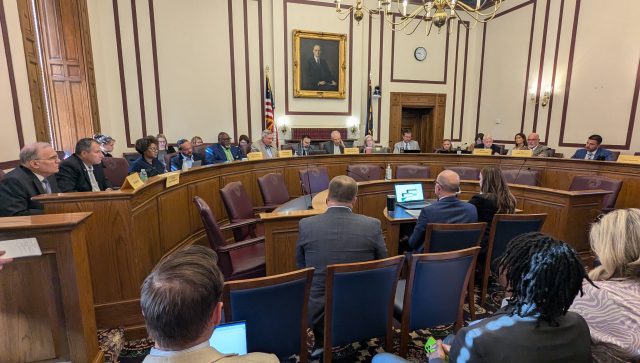A long-planned overhaul of the Statehouse’s physical security apparatus is over-budget and behind schedule, according to Frank Burnam, director of the Kansas Office of Facilities and Property Management.
Burnam delivered the news on Tuesday to the Joint Committee on Information Technology. The project’s scope includes replacement of the Statehouse’s electronic surveillance cameras and card access control system.
The project was originally scheduled to take 12 months and be fully completed in January. Now it is estimated to conclude in December, Burnam said. The initial price tag of roughly $1.65 million is now approximately $1.84 million and is being bankrolled via American Rescue Plan Act funds.
Burnam said the project’s full scope extended to other buildings affiliated with the Capitol Complex, which includes the Curtis State Office Building. Security upgrades to those facilities have been completed, according to Burnam. He also expressed confidence that the project will be wrapped prior to the start of the 2025 Legislative session.
“Ultimately, we will be done before the start of the legislative session,” Burnam said.
Timeline hiccups
Planning efforts for the project began in 2021, Burnam said, adding the project was developed jointly between the Department of Administration, Office of Information Technology Services, and the Kansas Highway Patrol — in consultation with Kansas City-based security consulting firm Burns & McDonnell. Burnam attributed the project’s interrupted timeline to supply chain issues.
“We were coming out of a pandemic and fighting for a lot of the same components that a lot of other vendors were for similar projects,” Burnam said, adding that early on the focus shifted to “installation of wiring and pulling of new fiber.”
Burnam said the timeline was further hindered because data related to all card holders had to be manually entered into the new system, “adding months to the project” while increasing its price tag.
“Our system was more of a handbuilt data system with thousands of user-groups — different hours and different cards,” he said. “And that all had to be manually entered into this new system.”
Another wrinkle hampering the timeline was the inclusion of “blackout dates,” which precluded the project from proceeding to avoid interference with the legislative session.
“We simply were not going to allow them to initiate the Statehouse work during the legislative session,” Burnam said of contractor American Digital Security. “So we asked them to hold off on that until the conclusion of the special session.”
Burnam also discussed the installation of “more sophisticated” cameras that weren’t included in the project’s original scope. He added that a confluence of issues resulted in substantial delays.
“I take full responsibility for the decisions that were made to push the contractor back; I told them to hold off in specific areas and to make sure we were going to do this the right way and have a great system when it was done,” he said.
Burnam said the contractor is solely responsible for all security-related “maintenance and upkeep” for the next three to five years.
Feedback from the committee was brief and mostly centered on the multilevel underground parking garage. Rep. Barb Wasinger, R-Hays, said she was appreciative of the upgraded lighting.
“It’s made a huge difference — instead of trying to feel your way to your car,” she said.
She also inquired about cellphone connectivity in the parking garage, noting that the emergency phone is not located in close proximity to all parked vehicles.
“If you are in an emergency over in the corner by Jackson and Eighth [streets], you may not make it to the emergency phone booth,” she said. “So I would like that to be a priority.”
Wasinger said she’d also like to see lobbyists issued a uniquely colored name card to allow easier entrance through Statehouse security since they’ve already been vetted.
“Is that reasonable? Unreasonable?” Wasinger asked. “Do I need to talk to more people — bug more people?”
Burnam said that he’s looking into “a fast pass process” that would allow lobbyists and possibly others to enter the building without passing through the metal detector.
“To allow those individuals to move through a little more rapidly while we can focus on people with bags and other stuff as part of that security,” he said.
Burnam also said his team is in the process of issuing upgraded security badges — entailing a gradual roll out to all state employees in Shawnee County. He said that he may implement a requirement that security badges be updated every four years with a current photo of the individual.
Burnam was also quizzed about the process of locking down the entire Statehouse. He said there are options in place, but declined to elaborate in a public forum. He was also asked if Burns & McDonnell conducted a full-scale security assessment “or just an assessment of the system.”
“They did a comprehensive security assessment of all of our facilities,” he said. “Including the grounds, points-of-entry, blind spots and camera surveillance.”
He added that the firm’s thorough “top-to-bottom” assessment “drove the approval” of the American Rescue Plan funding.
“That’s why we brought in a third-party, and they did a very nice job,” Burnam said.
Rep. Carl Turner, R-Leawood, said “it seems like we’re replacing a like-system with a like-system.” He cited facial recognition technology as an example, as opposed to merely upgrading security badges.
“Going through parking, your facial recognition of course wouldn’t change, regardless of vehicle and all the rest of things,” he said.
Turner added that not everybody plays by the same rules.
“Like in the lower-level parking,” he said. “If I go in through the gate, I have to present something to open it. But if I go in the other way, there is nothing to stop me — just [enter through] the exit.
“Things like that always puzzle me. Whether we’re truly looking at security or if we’re saying, ‘Well, look, we need to replace our badge system with a new badge system.’”
Matt Resnick is a statehouse reporter at State Affairs Pro Kansas/Hawver’s Capitol Report. Reach him at [email protected]






